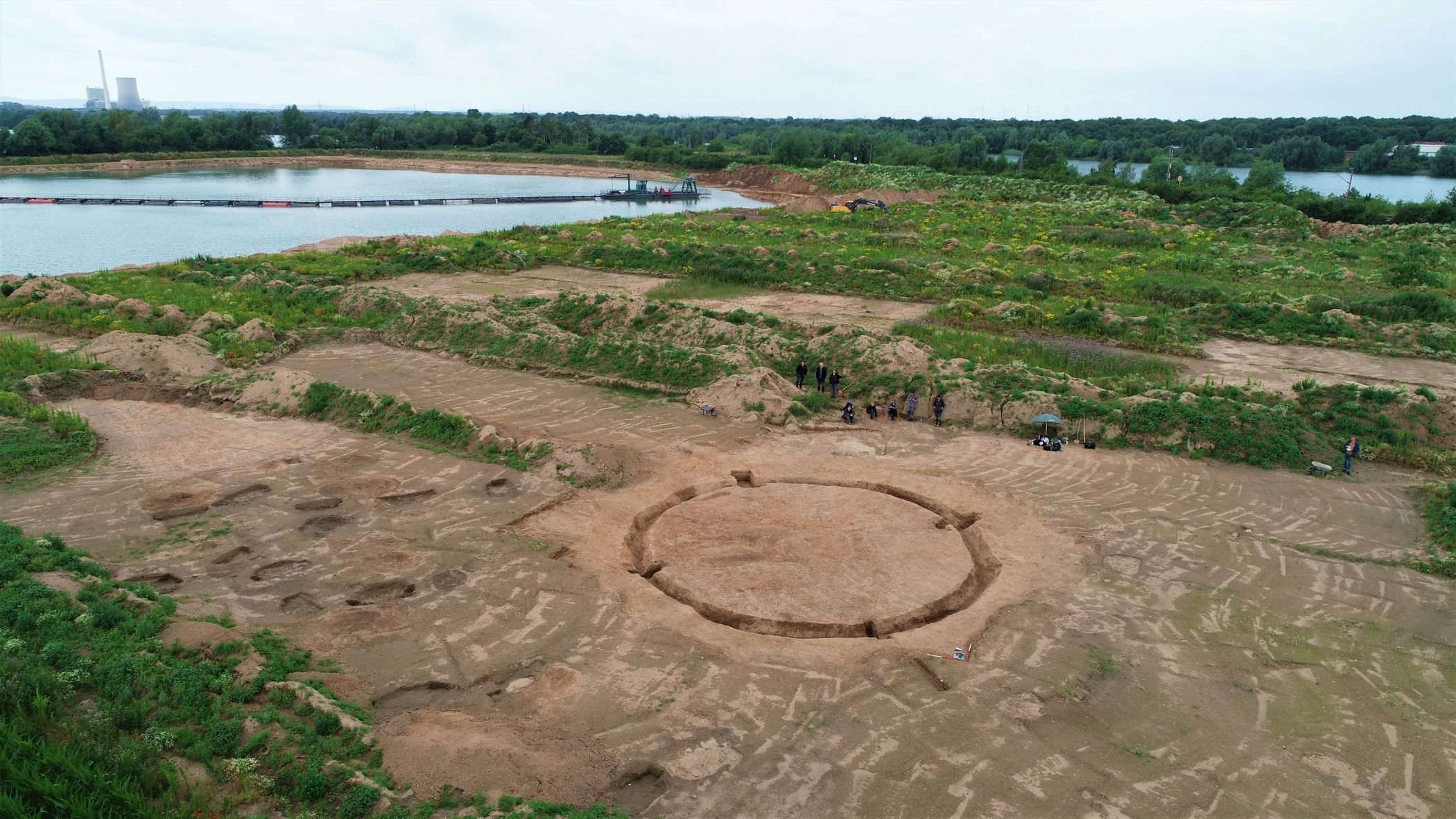
An expansive grave site used by different cultures over the course of hundreds of years has been excavated in Minden-Lübbecke, a district of northwestern Germany near Hanover.
The discovery came at the site of a proposed gravel quarry with archaeologists uncovering a Bronze Age burial mound surrounded by Iron Age cremation cemetery featuring urns dating back more than 2,000 years.
Researchers had long suspected something was buried at the Petershagen-Windheim site because the soil within the mound boasted richer vegetation than that outside of it. This seemed suggestive of a practice in which ancient communities dug ditches around their burials and filled them with fertile soil.
Decorated vessel was placed together with the cremated remains in one of the urns. Photo: courtesy Andreas Wibbe/LWL-Archaeology for Westphalia.
So it proved with a test dig conducted by experts from LWL Archaeology, a department connected to a state museum in Westphalia, discovering evidence within just a few meters. Beside the mound, which would have been visible in the landscape more than 2,500 years ago, archaeologists found urns and cremation graves, the remnants of funeral pyres that were buried in the ground.
“We knew from aerial photographs that there was most likely a burial site hidden in the ground here,” said Sven Spiong, head archeologist at LWL Archaeology. “At least some of the urns were deposited here in the 7th to 5th century B.C.E. by the so-called Iron Age Nienburg group, and the mound was probably built in the Bronze Age.”
The Nienburg group, a contemporary of the dominant Jastrof culture, was an Iron Age material culture with similarities to Celtic culture. One significant find was an ancient iron belt hook.
Half-preserved urn with a small additional vessel. Photo: Dirk Dödtmann/Archaeological Services.
The cremation graves are dated to the 2nd and 1st centuries B.C.E. with more accurate dating dependent on upcoming radiocarbon dating of charcoal discovered at the site.
Archaeologists believe the mound became an important reference point in the landscape which was used by successive groups over a significant time span.
“The new sites clearly reinforce the image of an extensive burial landscape with dozens of mounds and adjacent burials along the Westphalian Middle Weser,” said Sebastian Düvel, an advisor at the LWL Archaeology.
The discovery follows the excavation of a medieval settlement and Iron Age graves at the proposed site of a logistics hall Minden-Päpinghausen, a few miles south of Petershagen-Windheim. Together the excavations are shedding light on the life and death of ordinary peoples who inhabited the region more than 2,000 years ago.